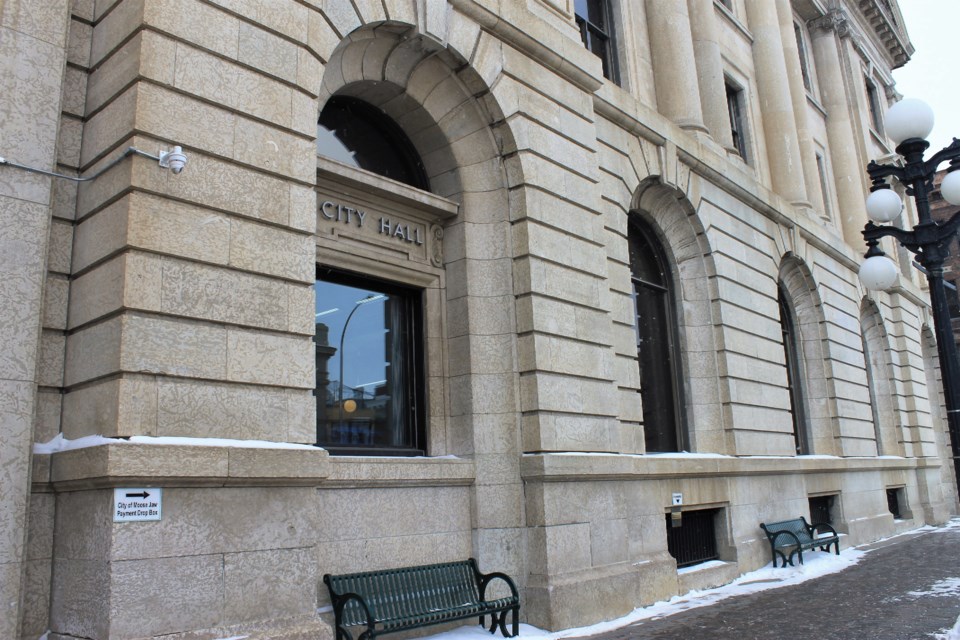The City of Moose Jaw could save $1.8 million in utility costs over 10 years and reduce its greenhouse gas emissions by 1,250 tonnes per year if city council adopts a proposed climate action plan.
The plan indicates that Moose Jaw — as a corporation and excluding residents and businesses — could reduce its emissions by 20 per cent by 2025 and by 45 per cent by 2030 while also fully eliminating water loss from all municipal buildings.
Furthermore, installing permanent electrical, natural gas and water sub-monitoring stations in each of the city’s 10 largest emitting municipal buildings and one wastewater building would also be important with this project, the plan said. These 11 buildings represent 48 per cent of the community’s overall emissions.
Installing these stations — live digital signs would also be installed in every municipal building to show the GHG emissions reductions and savings — would enable city hall to make better decisions using real-time data, added the document.
Dean Clark, president and CEO of Greenwave Innovations in Regina, spoke to city council during its recent executive committee about the proposed plan and the objectives the municipality can reach by 2025 and 2030 to reduce its corporate greenhouse gas emissions (GHGs).
Council later approved a recommendation to receive and file the report and ensure the plan came to 2022 budget deliberations for consideration.
The recommendation becomes official once council approves it during a future regular council meeting.
An aggressive plan
“It’s an aggressive and ambitious plan,” Clark said.
In 2019 the municipality as a corporation produced 21,574 tonnes of carbon dioxide equivalent (CO2e) per year, with municipal buildings being the largest emitters (47.6 per cent), followed by water and wastewater plants (27.4 per cent), fleet vehicles and waste collection (7.5 per cent each), streetlights (7.4 per cent) and transit (2.5 per cent), he said. Federal funding would be available for this project and to help reduce these emissions.
The largest GHG-emitting municipal building in 2019 was Mosaic Place, which produced 2,912 CO2e. The second-largest emitter was the Kinsmen Sportsplex at 1,925 CO2e.
The goals of reducing GHG emissions by 2025 and 2030 can meet and exceed the recommendations from the United Nations Intergovernmental Panel on Climate Change, claimed Clark. Many municipalities are using those recommendations to achieve the 2015 Paris climate change targets.
The path to 2025 can be partially reached in 2022 and 2023 since city council has agreed to install solar panels on city hall/police station, Yara Centre, Mosaic Place and the Hoffman blower house, he continued.
These four projects would account for a 13.3-per-cent reduction in GHG emissions, while new LED lighting at Mosaic Place and the new high-service pumphouse could account for the remaining 6.7 per cent.
“But we really need to put a lens on data and prioritize where best to put the money going forward,” Clark said.
The plan indicated that the municipality could save $1.8 million over 10 years in utility costs, including 82 per cent in direct savings and 18 per cent in maintenance costs. The city could also reduce its GHG emissions by 1,250 tonnes per year, or about 5.8 per cent of all corporate emissions.
The return on investment would be 4.9 years, along with emission reductions, maintenance benefits, safety enhancements and risk reduction.
Clark affirmed that the way to achieve these targets is through a data-driven, sequential conservation strategy that is continuous. He added that retrofitting older buildings and incorporating new technologies and renewable generation would demonstrate to residents how they can also reduce their emissions.
It is difficult for people to grasp what a carbon tonne is, he acknowledged, but by showcasing the reductions digitally in each municipal building, people will gain a better understanding of how the reductions relate to the number of cars or homes affected.
The next executive committee meeting is Monday, Dec. 6.


.png;w=120;h=80;mode=crop)

